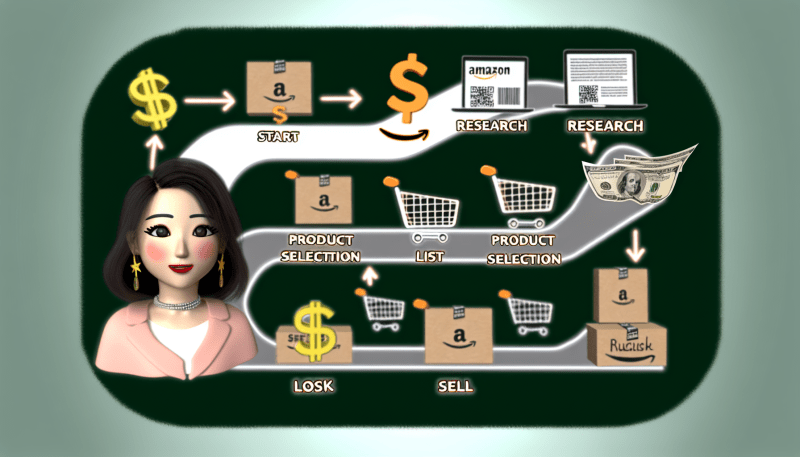html
Amazon's Fulfillment by Amazon (FBA) program is a powerful tool for sellers to leverage the e-commerce giant's vast distribution network and customer base. However, the complexity of FBA fees can be a major challenge, potentially eating into profits if not carefully managed. This guide aims to demystify Amazon FBA fees, offering practical advice on how to optimize these costs and maximize your profits.
Understanding Amazon FBA Fees
At its core, Amazon FBA involves sending your products to Amazon’s fulfillment centers, where they are stored, packed, and shipped to customers on your behalf. While this offers numerous advantages, including prime eligibility and increased exposure to buyers, it comes with various fees that can impact your profit margins. Key FBA fees include:
- Fulfillment Fees: Charged per unit, based on the product's size and weight. This fee covers the cost of storage, packaging, and shipping.
- Monthly Inventory Storage Fees: Charged based on the volume of space your inventory occupies in the fulfillment center, with rates varying seasonally.
- Long-term Storage Fees: Additional fees applied to items stored for an extended period, encouraging sellers to manage their inventory proactively.
- Removal Order Fees: Incurred if you decide to have items returned to you or disposed of by Amazon.
- Return Processing Fees: Specific to items in categories where Amazon offers free return shipping. This fee covers the handling of returned items.
Understanding these fees is the first step toward optimizing your FBA strategy and ensuring a profitable operation.
Strategies for Minimizing Amazon FBA Fees
To minimize the impact of FBA fees on your bottom line, consider the following strategies:
- Optimize Product Size and Packaging: Since fulfillment fees are based on size and weight, reducing your product’s packaging to the minimum necessary can lead to significant savings.
- Monitor Inventory Levels: Keeping just enough inventory in Amazon’s fulfillment centers to meet demand can help avoid long-term storage fees. Utilize inventory management tools to track your stock levels.
- Consider Removal Orders for Slow-Moving Stock: If certain items are not selling and are likely to incur long-term storage fees, it may be more cost-effective to have them returned to you or disposed of.
- Keep an Eye on Seasonal Fluctuations: Storage fees increase during the high-demand holiday season. Plan your inventory accordingly to avoid unnecessary costs.
- Analyze Your Product Portfolio: Evaluate the profitability of each product after accounting for FBA fees. It might be beneficial to fulfill some items yourself or drop underperforming products.
Implementing these strategies requires a deep understanding of your costs and margins. Regularly reviewing and adjusting your approach is key to maximizing your profitability through FBA.
Utilizing Amazon’s Tools and Resources for Fee Optimization
Amazon offers several tools and resources designed to help sellers manage their FBA fees effectively:
- FBA Revenue Calculator: This tool allows you to compare fulfillment costs between Amazon FBA and your own fulfillment methods, helping you make informed decisions about which products to enroll in FBA.
- Inventory Health Report: Gain insights into how efficiently your inventory is moving and identify items that could incur long-term storage fees.
- Monthly Storage Fee Report: Detailed insights into your storage fee charges, helping you identify areas where you could reduce your storage footprint and save money.
Leveraging these tools can provide valuable insights into how FBA fees are affecting your business and highlight opportunities for optimization.
Handling Returns and Reducing Associated Costs
Managing returns effectively is crucial for minimizing costs and maintaining customer satisfaction. Here are some tips for reducing the impact of return processing fees:
- Improve Product Listings: Clear, accurate product descriptions and high-quality images can reduce the likelihood of returns due to unmet customer expectations.
- Opt for High-Quality Packaging: Ensuring your products are well protected can decrease the chances of damage during transit, leading to fewer returns.
- Analyze Return Reasons: Understanding why customers return items can provide insights into potential improvements, whether in product quality, description accuracy, or customer targeting.
While returns are a natural part of e-commerce, minimizing their frequency and cost can significantly impact your FBA profitability.
Conclusion
Maximizing profits while utilizing Amazon FBA requires a thorough understanding of the associated fees and how they can be managed effectively. By optimizing product size, monitoring inventory levels, and employing Amazon's tools for sellers, you can significantly reduce costs and increase your profit margins. Additionally, understanding and mitigating the factors that lead to customer returns can further enhance your profitability. Implementing these strategies will enable you to leverage the benefits of FBA while minimizing its downsides, ultimately contributing to a successful and profitable Amazon selling venture.
The Fulfillment by Amazon (FBA) program offers sellers unparalleled access to Amazon's logistical prowess and customer reach. Yet, the intricacies of FBA fees pose a labyrinthine challenge, which, if not adeptly navigated, can significantly dent profits. This guide is meticulously crafted to decode the labyrinth of Amazon FBA fees, equipping sellers with astute strategies to optimize these expenses and enhance profitability.
Deciphering Amazon FBA Fees
FBA simplifies logistics for sellers by taking charge of storing, packing, and shipping products, and even handling returns. This convenience, however, comes with a spectrum of fees, each affecting your profit margins differently. Prominent among these are Fulfillment Fees, Monthly and Long-term Storage Fees, and fees for Returns and Removal Orders. A profound understanding of these fees forms the bedrock of a profitable FBA operation.
Streamlining FBA Expenses
Efficiency and foresight in managing FBA costs is paramount. Strategies like refining your product dimensions and packaging, vigilant inventory management to preclude long-term storage penalties, judiciously executing removal orders for languishing stock, and timing your inventory levels to sidestep seasonal fee hikes, are instrumental. Additionally, a periodic audit of your FBA activities can reveal insights to harness FBA's benefits while curbing its costs.
Mastering FBA with Amazon's Arsenal
Amazon extends an array of tools to empower sellers in finessing their FBA strategy. The FBA Revenue Calculator, Inventory Health Report, and Monthly Storage Fee Report stand out as cornerstones for optimizing FBA fees. Leveraging these tools can illuminate the nuances of how fees are impacting your business, paving the way for informed decision-making and fee minimization.
Mitigating Returns to Preserve Margins
Returns, while inevitable in e-commerce, constitute a significant variable in the FBA fees equation. Enhancing listing quality, investing in robust packaging, and dissecting return motives can mitigate return instances and associated costs, solidifying your bottom line.
Epilogue: Harnessing FBA for Profit Maximization
Mastering FBA fees is not merely about cost reduction; it's about strategic business elevation. By finetuning product specifics, adeptly managing inventory, exploiting Amazon's analytical tools, and refining return logistics, sellers can transform FBA fees from a daunting challenge into a competitive edge. Vigilance, adaptability, and informed decision-making are the pillars of success in Amazon's dynamic marketplace. Embrace these principles, and the pathway to maximized profits through Amazon FBA will unveil itself.






